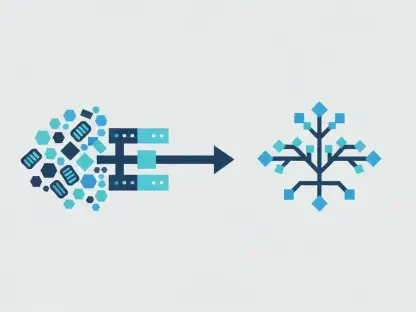The field of oncology is perpetually advancing, with innovative therapies constantly emerging to tackle complex diseases like lung cancer. Ivan Kairatov, a seasoned expert in biopharma with extensive experience in technological innovations and R&D, provides insights into the recent FDA approval of Zegfrovy, a targeted therapy for non-small cell lung cancer (NSCLC). Here, we delve into the implications of this approval and the future of cancer treatment.
What is Dizal’s new drug, Zegfrovy, approved to treat by the FDA?
Zegfrovy, or sunvozertinib, has been approved by the FDA for the treatment of a specific subset of non-small cell lung cancer (NSCLC) patients. It targets those with locally advanced or metastatic NSCLC who have epidermal growth factor receptor (EGFR) exon 20 insertion mutations and whose disease has progressed after undergoing platinum-based chemotherapy.
Can you elaborate on what subset of NSCLC patients Zegfrovy is specifically targeting?
Zegfrovy specifically targets adult patients with NSCLC characterized by EGFR exon 20 insertion mutations. This mutation is relatively rare and often results in a more aggressive disease course, making effective treatment options crucial for improving patient outcomes.
What is the significance of Zegfrovy being the only targeted oral treatment approved in the US for this specific condition?
The significance is substantial, as it marks the introduction of the only targeted oral therapy in the US specifically for patients with EGFR exon 20 insertion mutations in NSCLC. This approval represents a crucial option for patients who have limited alternatives after platinum-based chemotherapy fails.
Could you explain EGFR exon 20 insertion mutations and their role in NSCLC?
EGFR exon 20 insertion mutations involve changes in the EGFR gene, which plays a critical role in cell growth and division. These mutations lead to an overactive EGFR protein, driving cancerous growth in lung tissues. Their presence in NSCLC signifies a need for specialized treatment approaches, as they can render tumors resistant to common EGFR-targeted therapies.
How does Zegfrovy’s approval impact the treatment landscape for NSCLC?
The approval of Zegfrovy significantly alters the treatment landscape by providing a much-needed targeted therapy for a subgroup of NSCLC patients who previously had very limited options. This can potentially improve survival rates and quality of life for those affected by these specific genetic mutations.
What previous treatments do patients need to have undergone before being eligible for Zegfrovy therapy?
Before being eligible for Zegfrovy therapy, patients must have experienced disease progression after receiving platinum-based chemotherapy, which is typically part of the standard treatment protocol for advanced NSCLC.
Could you give some context on the prevalence of lung cancer and NSCLC in the United States?
Lung cancer remains a prevalent concern in the US, with the American Cancer Society estimating that approximately 226,650 people will be diagnosed this year. Non-small cell lung cancer (NSCLC) accounts for about 87% of these cases, highlighting the significant impact and urgent need for effective treatments in this population.
What were the key findings from the pivotal WU-KONG1 part B study that supported this approval?
The key findings from the WU-KONG1 part B study included a notable objective response rate of 53.3% in patients treated with Zegfrovy, along with a duration of response for nine months in 57% of participants. These results played a crucial role in the FDA granting accelerated approval.
How did Zegfrovy perform in terms of objective response rate and duration of response?
Zegfrovy demonstrated an objective response rate of 53.3% and showed a sustained duration of response for nine months in 57% of patients. These metrics indicate a significant therapeutic effect in treating this challenging form of NSCLC.
What are the implications of the drug’s anti-tumor efficacy observed regardless of amivantamab treatment?
The anti-tumor efficacy seen irrespective of previous treatment with amivantamab suggests Zegfrovy can be effective for a broader range of patients, potentially serving as an alternative or complement to current therapies and addressing a wider spectrum of treatment needs.
How does Dizal view Zegfrovy in terms of safety and ease of administration for patients?
Dizal views Zegfrovy as an innovative treatment that not only improves efficacy but also enhances safety and ease of use for patients. This oral therapy simplifies administration compared to more invasive treatment options, supporting better adherence and convenience for patients.
What comments did Xiaolin Zhang, Dizal’s CEO, make regarding the development and approval of Zegfrovy?
Xiaolin Zhang expressed pride in developing Zegfrovy, highlighting it as a first-in-class oral therapy that offers effective treatment with enhanced safety and ease of administration. The CEO sees it as a pivotal advancement for patients with specific NSCLC mutations.
Could you elaborate on Pasi Jänne’s perspective about the approval being a scientific advancement?
Pasi Jänne sees the approval of Zegfrovy as a milestone in scientific advancement, addressing the long-standing unmet medical needs of an underserved patient population. This marks a significant shift in how certain genetic mutations within NSCLC are treated.
What does the FDA’s accelerated approval pathway entail for Zegfrovy’s continued use?
The FDA’s accelerated approval pathway allows Zegfrovy to be used based on preliminary efficacy data. However, its continued approval is contingent upon verifying these benefits in a confirmatory trial, ensuring that the drug indeed fulfills its therapeutic potential.
Why might continued approval for Zegfrovy be contingent on verification of clinical benefit?
Continued approval may depend on further verification to confirm the observed clinical benefits. This ensures that the drug’s early promise translates into sustained efficacy and safety in broader populations over extended periods.
How is Thermo Fisher Scientific’s Oncomine Dx Express Test related to Zegfrovy’s use?
The Oncomine Dx Express Test developed by Thermo Fisher Scientific has been approved to identify patients eligible for Zegfrovy treatment. The test is critical in selecting the appropriate candidates who have the specific EGFR exon 20 insertion mutations.
What is your forecast for the future of targeted therapies in oncology?
The future is incredibly promising, as targeted therapies like Zegfrovy pave the way for precision medicine, customized to genetic profiles. As research progresses, we can expect more drugs tailored to specific mutations, improving outcomes and reducing side effects across various cancer types.









